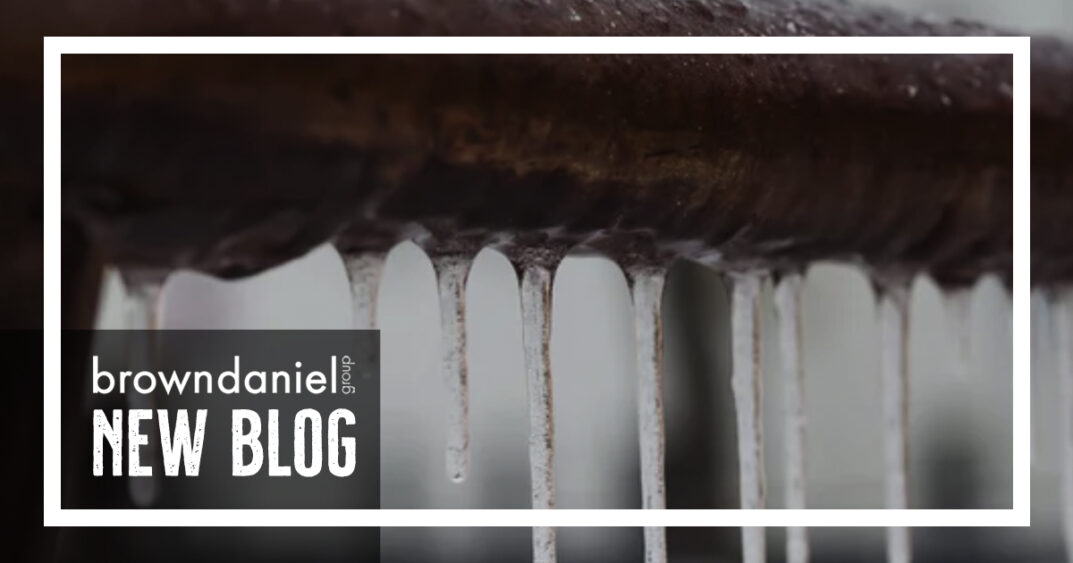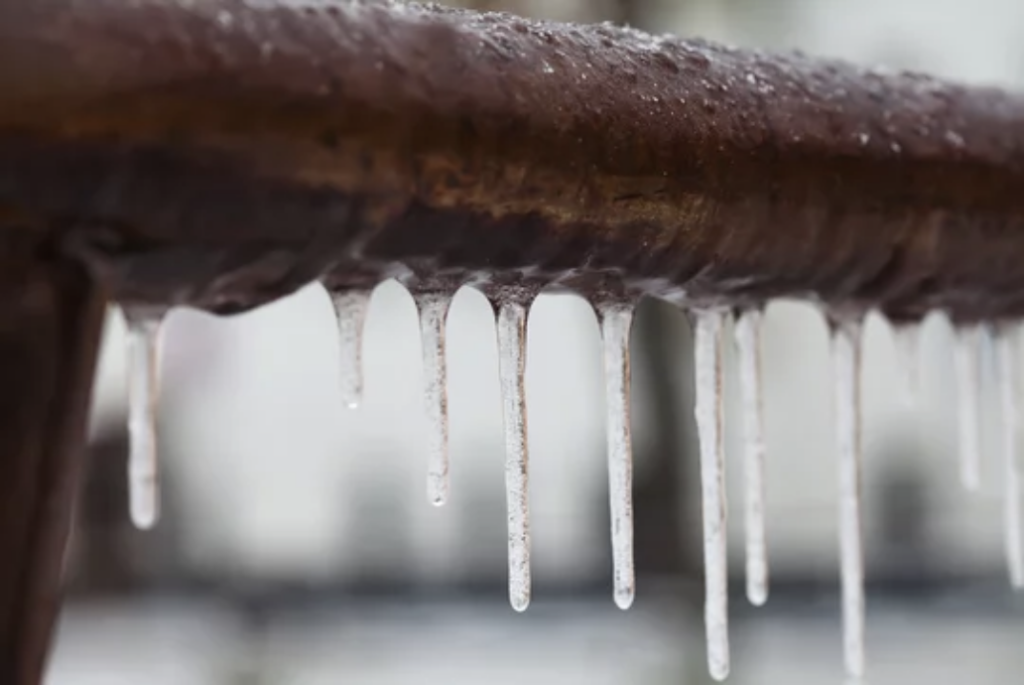
Did you know that every year, almost one in 50 homes experiences a frozen pipe issue serious enough to warrant an insurance claim? That means that over your lifetime as a homeowner, odds are this will happen to you at some point. The smallest fissure in a water pipe can send hundreds of gallons of water per minute flooding into your home, leading to significant and costly damage. Busted pipes are one of the leading causes of residential property damage during the cold winter months, and can cause thousands of dollars in water damage – many claims top $5,000 or more.
While a pipe can freeze and burst anywhere in your home, those located in unheated interior spaces are the most at risk, such as in basements, attics and garages. Plumbing experts say almost 40% of the burst pipe issues they treat are for pipes located in basements. Luckily an ounce of prevention is worth a pound of cure! Read on for more information about frozen pipes and some tips on getting your pipes ready for the plummeting temperatures before they arrive.
Why Do Pipes Burst?
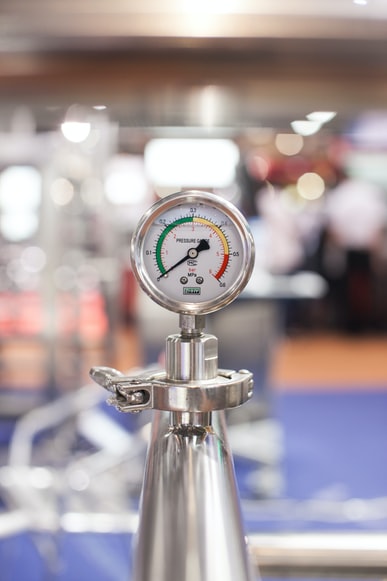
When water freezes in your pipes, the newly forming ice can cause expansion that damages weak plumbing and the connection points of pipes. As water freezes in can expand in volume by as much as 9%, which is more than enough to put terminal pressure on your pipes. This expansion also comes with a great deal of force – the pressure inside a pipe that is freezing can quickly go from 40 pounds per square inch (psi) to 40,000! No pipe can hold that type of pressure, so it is this build up in force that leads the pipe to eventually burst. A rip or tear in the pipe is even more likely to occur if previous cold spells have weakened the pipes. When the ice blockage melts, the water trapped behind it will begin to push its way out of the pipe. In some colder climates, damage from a burst pipe might not even show up until after the winter, when the blockages finally melt.
So what can you do to avoid these disasters?
Wrap Outdoor Pipes
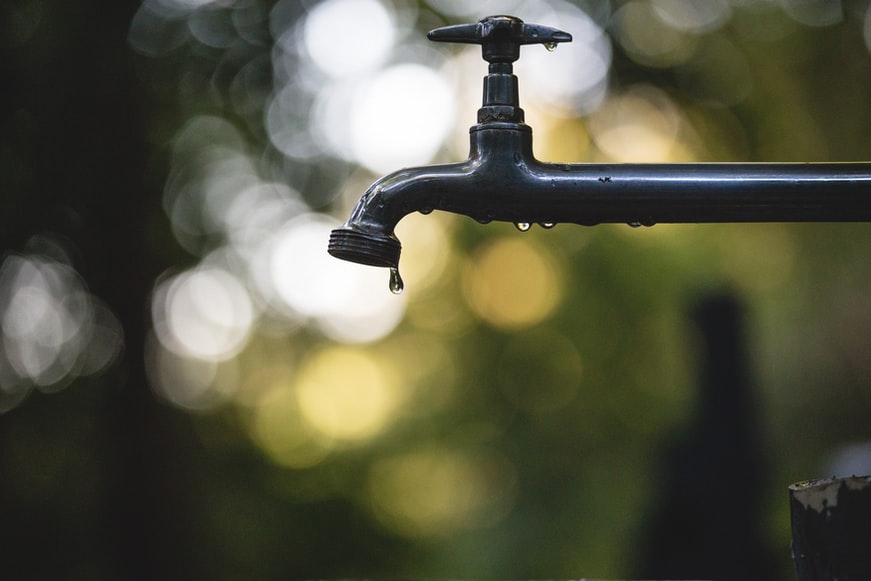
If you have any pipes located outdoors or in an uninsulated crawl space, wrap them in insulating pipe cover before the temperatures begin to drop below freezing. If you have pipes in an unheated garage or unfinished basement, those pipes will also need some extra care before a freeze. Foam pipe covers are inexpensive and easy to find, with most hardware and big box stores selling them for as little as $3 per 6 foot roll. When you consider that the average cost to fix a burst pipe and its ensuing damage is approximately $5,000, this preventative measure is a no brainer! Wrap pipes liberally, using even more insulation on the ones in the most exposed locations.
While you are insulating your outdoor pipes, take this time to also make sure that the water to any outside spigots is turned off completely. If any of your outdoor faucets have cut-off valves, they should be closed off and drained for the season. You can even purchase faucet covers to insulate them throughout the winter.
Leave on the Heat

If you will be away from home for an extended period of time, such as a winter vacation or while visiting family for the holidays, resist the urge to turn your heat off while you are gone. If the temperature in your home dips too low, even pipes in well-insulated walls are at risk of freezing. Feel free to dial the temperature down a few degrees cooler than you normally keep it, but it should never be turned off completely. Preferably thermostats should not be set to below 55 degrees. Before you head out of town, open the cabinets under sinks and make sure the interior doors throughout your home are left open to keep the warm air flowing. The bonus to leaving your heat on is that you won’t need to use quite so much energy trying to heat it back up upon your return.
You can also preserve your pipes and keep temperatures higher in your house by making sure garage doors remain closed at all times, outside of quick entrances and exits. This is especially important if you have water supply lines in your garage. And your home’s insulation quality also matters, even if the main insulation in your home is located far away from your pipes. Make sure the insulation in your attic has not become too settled and sparse. If it has, it might be time to consider adding more, or replacing it completely. And to prevent more of your heat from escaping, seal any cracks and openings around windows and doors.
Let the Water Flow

When temperatures are predicted to drop significantly lower than freezing, leave a faucet in your house running with a small but steady flow. The danger zone begins around 20 degrees, conditions we don’t see too much of in the metro Atlanta area. Be alert for these rare temperature drops, and when they occur, leave some water flowing in your home. And be aware that wind chill also plays a factor – if the weather is windy, you may see pipes freezing at temperatures slightly above that 20 degree threshold, so leaving a faucet on may be a good idea even if temperatures are hovering closer to 30 degrees Fahrenheit. When a tap is left open, it relieves the air pressure that can build up behind a blockage, preventing damaging rips and tears in your pipes. Even if the water slows or stops and you suspect a freeze, leave the tap open to prevent the pressure buildup.
Does it matter which faucet in your home you allow to run? Some experts will tell you to choose the faucet farthest from where water enters your home so that water must cycle all the way through your piping system in order to drip. Others say it should be a faucet closest to exposed pipes, such as any sink or bathtub that is located against an exterior wall. To be safe, you can leave one of each running at a slow trip. And remember to leave both the hot and cold taps dripping.
Thawing Frozen Pipes
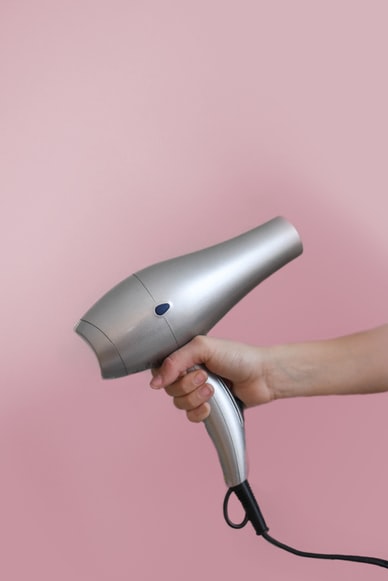
If you neglect any of these precautions, or a deep freeze occurs that gets to your pipes in spite of your best efforts, you may find yourself with frozen pipes that have thankfully not yet burst. If you turn a sink on after a very cold night and only a trickle of water comes through, or none at all, you likely have frozen pipes. Or if you notice a layer of frost on a pipe located outdoors, that pipe may contain an ice plug inside. So how do you fix this situation without causing a frozen pipe to turn into a burst pipe?
Start by turning on at least one faucet in your home. As you heat the frozen pipe and the ice inside begins to melt, you’ll want the water to have somewhere to go. And running water through the pipe will help you continue with the thawing process. Next you’ll want to begin applying heat to the frozen section of pipe. Since pipes that freeze are usually already exposed, it should be relatively easy to determine where the frozen spot is. Once you’ve deduced the likely culprit, apply heat in the form of an electric hair dryer or by wrapping the pipes in towels soaked in hot water. A heating pad wrapped around the pipe can also be used. You may be tempted to use something a bit more high powered, but for your safety, you should resist this urge. Any device with an open flame can damage the pipes and even worse, could cause a fire.
Continue applying heat to the frozen pipe until full water pressure has been restored to the faucet you left on. Then check all other sinks, bathtubs and showers in your home to make sure there are no other frozen locations in your plumbing system. If one pipe has frozen, it’s always possible that others have as well. If you were unable to locate the frozen section of pipe, or if your efforts to thaw the ice plug do not work, you will need to call a licensed plumber to remedy the situation.
How High is the Risk Really, Here in Atlanta?
If we don’t get much freezing weather, your home is safe, right? Think again. Homes built in temperate Southern climates aren’t usually built with frosty weather in mind, and may contain more uninsulated pipes than homes located in parts of the country where freezing weather is the norm. Pipes are more likely to be exposed either outdoors or in uninsulated basements when they are built in areas that are not prone to multiple deep freezes each year. You also may not notice drafts coming from poorly sealed doors and windows as much in our temperate climate as you might in locations that are colder for a bigger part of the year. Never assume that just because frozen pipes are less common, that they can’t happen to you.

